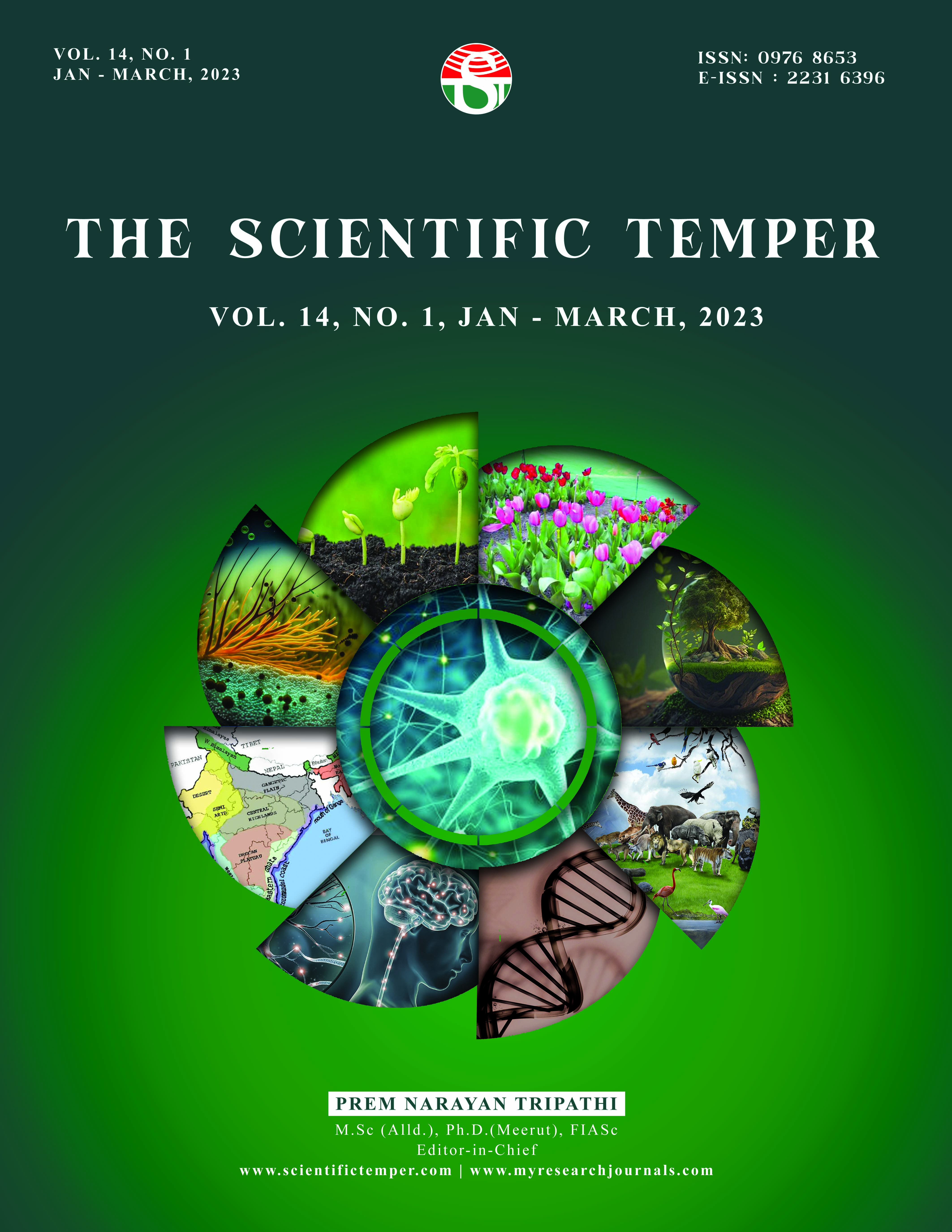Challenges and opportunities in product development using natural dyes
Downloads
Published
DOI:
https://doi.org/10.58414/SCIENTIFICTEMPER.2023.14.1.26Keywords:
Dyeing, Natural material, Effluent parameters, Eco-friendly, Sustainable.Dimensions Badge
Issue
Section
Dyeing is a crucial textile technology procedure and one of the most enjoyable Textile Arts. Dyeing is an ancient art form that predates our civilization. All over the world the coloring of textile material is done with bleached fabric using natural and synthetic dyes. Coloring with natural materials is now commonly used as a supplement to hand spinning, knitting, and weaving. This study aims to compare the effluent properties of synthetic and natural dyes. Additionally, a product was created utilizing natural dyes because they are safe for the environment.Abstract
This research article compares effluent parameters for natural and artificial dyes used for dyeing cotton fabrics, with a focus on fastness attributes, because while colouring the textile materials not all dyes are transfer, around 10-15% of dyes will remains in dye bath itself. When this effluent discharge, it is intensely colorful and aesthetically unpleasant and it will produce environmental problems.
How to Cite
Downloads
Similar Articles
- Payal Saxena, Sustainable finance – A master key to sustainable development , The Scientific Temper: Vol. 16 No. Spl-2 (2025): The Scientific Temper
- Shriram N. Kargaonkar, Sushma Pradeep Chalke, Sunil Mahajan, Statistical Modeling of Consumer Preferences for Eco-friendly Digital Products: A Data-driven Approach Toward Sustainable Consumption in India , The Scientific Temper: Vol. 16 No. 10 (2025): The Scientific Temper
- Dhulasi Priya S, Saranya K G, Significance of artificial intelligence in the development of sustainable transportation , The Scientific Temper: Vol. 14 No. 02 (2023): The Scientific Temper
- Nitin J. Wange, Sachin V. Chaudhari, Koteswararao Seelam, S. Koteswari, T. Ravichandran, Balamurugan Manivannan, Algorithmic material selection for wearable medical devices a genetic algorithm-based framework with multiscale modeling , The Scientific Temper: Vol. 15 No. 01 (2024): The Scientific Temper
- Siddharth P. Singh, Amar B. Verma, Ankur Srivastava, Kamlesh K. Chaurasiya, Anil Kumar, Prashant K. Singh, Sindhu Singh, Design Design, structural, and electrical conduction behavior of Zr-modified BaTiO3-BiFeO3 perovskite ceramics , The Scientific Temper: Vol. 15 No. 02 (2024): The Scientific Temper
- Regasa Begna, Worku Masho, Wondosan Wondimu, Yaregal Tilahun, Tilahun Bekele, Benyam Tadesse, Haile Negash, Participatory evaluation and demonstration of productive performance of Bovans Brown chicken under village production system in Menit Shasha Woreda, West Omo Zone, Ethiopia , The Scientific Temper: Vol. 14 No. 03 (2023): The Scientific Temper
- Sachin V. Chaudhari, Jayamangala Sristi, R. Gopal, M. Amutha, V. Akshaya, Vijayalakshmi P, Optimizing biocompatible materials for personalized medical implants using reinforcement learning and Bayesian strategies , The Scientific Temper: Vol. 15 No. 01 (2024): The Scientific Temper
- Mohiyuddeen Hafzal, Management strategies for sustainable development goals: A roadmap to Viksit Bharat@2047 , The Scientific Temper: Vol. 16 No. Spl-1 (2025): The Scientific Temper
- Gourav Kalra, Arun Kumar Gupta, Multi-response Optimization of Machining Parameters in Inconel 718 End Milling Process Through RSM-MOGA , The Scientific Temper: Vol. 13 No. 02 (2022): The Scientific Temper
- Isreal zewide, Abde S. Hajigame, Wondwosen Wondimu, Kibinesh Adimasu, Response of Bread Wheat (Triticum aestivum L.) Varieties to Blended NPSB Fertilizer Levels in Sori Saylem District, South-West Ethiopia , The Scientific Temper: Vol. 14 No. 02 (2023): The Scientific Temper
You may also start an advanced similarity search for this article.



